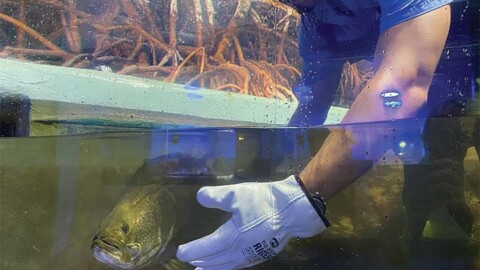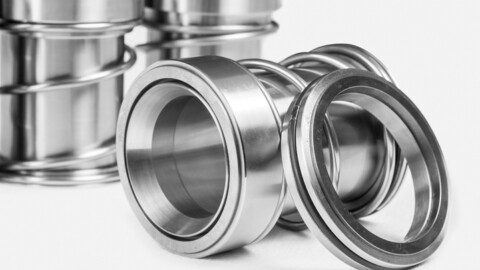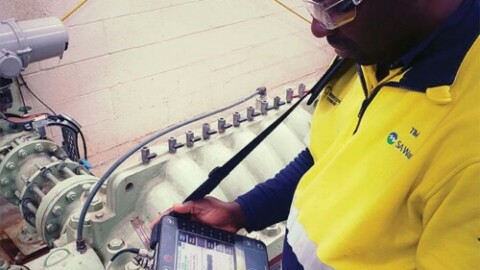The PIA’s Australian Pump Technical Handbook is a cornerstone text for the Australian pump industry and, in our opinion, a must have for anyone who deals with pumps on a regular basis. In this ongoing series, we feature abridged chapters from the classic book to showcase the various areas covered and to reacquaint readers with the technical aspects of pumps. In this issue we continue looking at selecting pump materials, taking a deep dive into plastic and non-metallic pumps, and preferred materials.
Plastic and non-metallic pumps
Plastic, in particular more recently developed thermoplastics and thermosets, are attractive to pump manufacturers due to their qualities, including:
- Lightweight
- Relatively strong
- Inexpensively fabricated
- Excellent corrosion resistance
- Appearance
- There are a number of engineered thermoplastics that are commonly used in commercial pump manufacturing in Australia.
Nylon
Nylon is one of the most, if not the most, extensively used thermoplastic and is commonly used to manufacture impellers, housings, venturis, etc. Nylon, nylon 11 and nylon 23 – natural or glass filled – provide high impact strength and toughness, making them attractive in pump manufacturing.
Acetals
Acetals are attractive due to their excellent wear resistance, their ability to operate at reasonable high temperatures, and good chemical resistance. They are often used in the manufacture of poppets, bushes, jets, etc.. Thermoplastic polyesters (PBTs) Natural or glass-filled PBTs are used to manufacture components such as diffusers, impellers, pressure tanks, pump housings, etc. due to their high heat deflection.
Polycarbonate
Polycarbonate is extensively used by pump manufactures as it offers high impact resistance and good dimensional stability. It is commonly used to manufacture impellers, casings, etc.. Polycarbonate is normally used as a glass-filled material, however, natural clarity is sometimes a required property.
Polysulfone
Polysulfone is typically used where severe temperatures or stress conditions are present as it has a very high heat temperature deflection and excellent chemical resistance. It is normally used as a glass-filled material for impellers, housings, etc..
Modified polyphenylene oxide (Noryl)
Noryl is commonly used as a glass-filled material to provide mouldings with good dimensional stability and a hard, scratch resistant surface. It has a high enough tensile strength that allows it to be used for casings, injector housings, etc..
Polyphenylene sulphide (PPS)
PPS is a dimensionally stable material with excellent electrical, high temperature and solvent resistance. It is used for pump components which are intended for operation in more severe conditions.
Thermosets
Thermoset construction uses continuous strand fibreglass reinforcement for optimal strength and corrosion resistance. Typical thermosets include vinyl ester resin, cross linked unsaturated polymer resin (epoxy), and unsaturated polyester.
It is often referred to as fibreglass reinforced plastic (FRP) and is used for all wetted parts of a non-metallic pump. The preferred manufacturing process for thermosets is resin transfer moulding as it allows for long-strand fibreglass mat to be cut into specific shapes and sizes, with controlled placement of more glass in high stress areas to ensure structural integrity under high pressure.
FRP has excellent corrosion resistance, with different resins and catalysts available to cover a wide range of corrosive fluids.
Preferred materials
The PIA, in association with the Australian pump industry, has compiled a list of cast and wrought alloys, which can be found in full in the Australian Pump Technical Handbook. When compiling the list, consideration was given to user requirements, service performance and availability.
It is possible to select an alloy from the list to meet a majority of pumping applications and to obtain the necessary material without great difficulty. When possible, materials should be selected from the list unless specific application requirements indicate otherwise.
Any decision to use alloys other than those listed should be carefully considered and discussed with the pump manufacturer.
Pump materials for different liquids
The Australian Pump Technical Handbook does not intend to provide a list of materials suitable for use with the multitude of liquids that can be pumped.
However, if this information is required, a comprehensive table indicating materials commonly used to pump various liquids can be found in the American Hydraulic Institute Standards for Centrifugal, Rotary and Reciprocating Pumps.

Further information and detailed diagrams, equations and schematics can be found in the Australian Pump Technical Handbook, available from the PIA website. The Handbook has recently undergone an update, with the new 6th edition available now. In the next edition of Pump Industry, we continue to explore pipe systems.





















